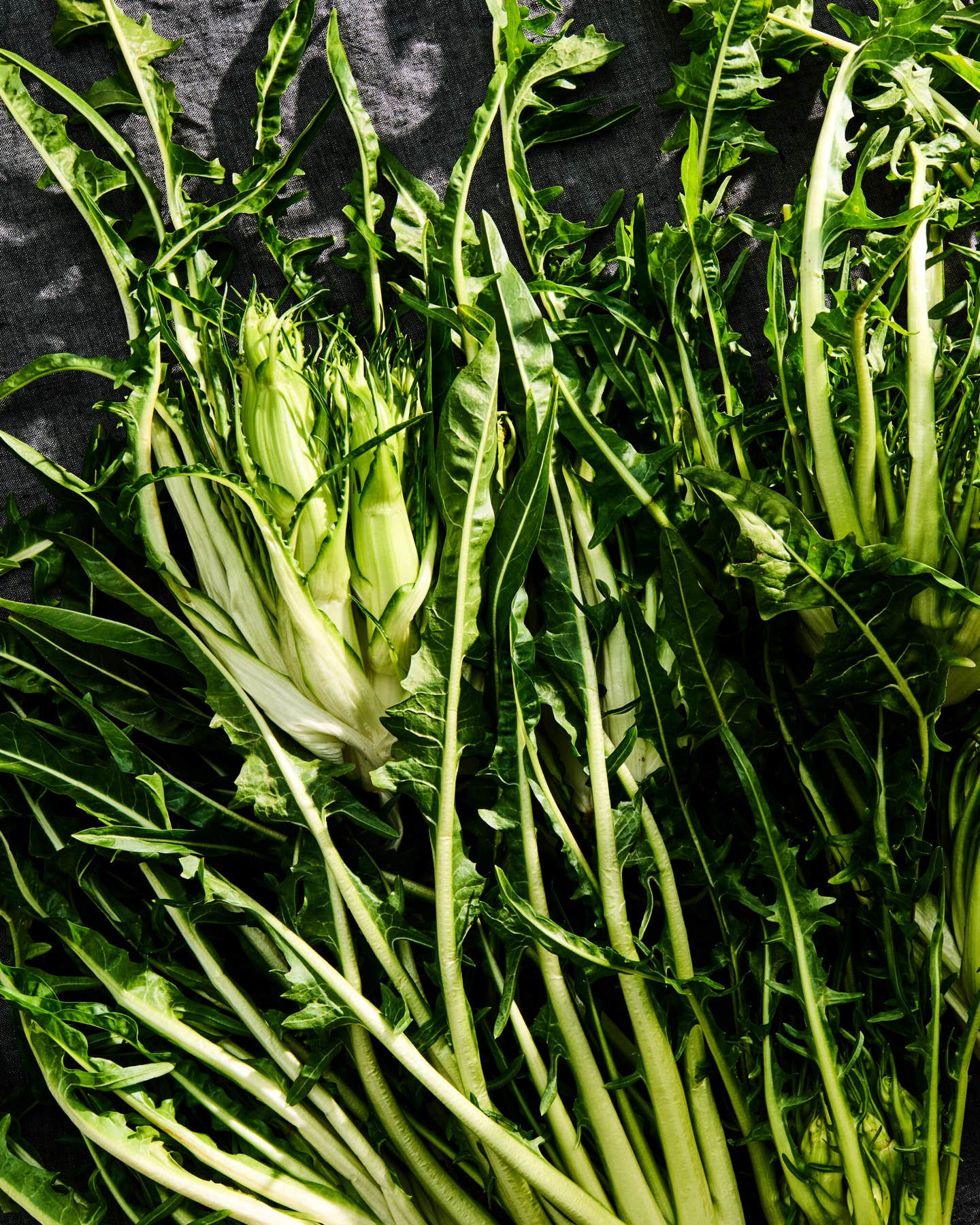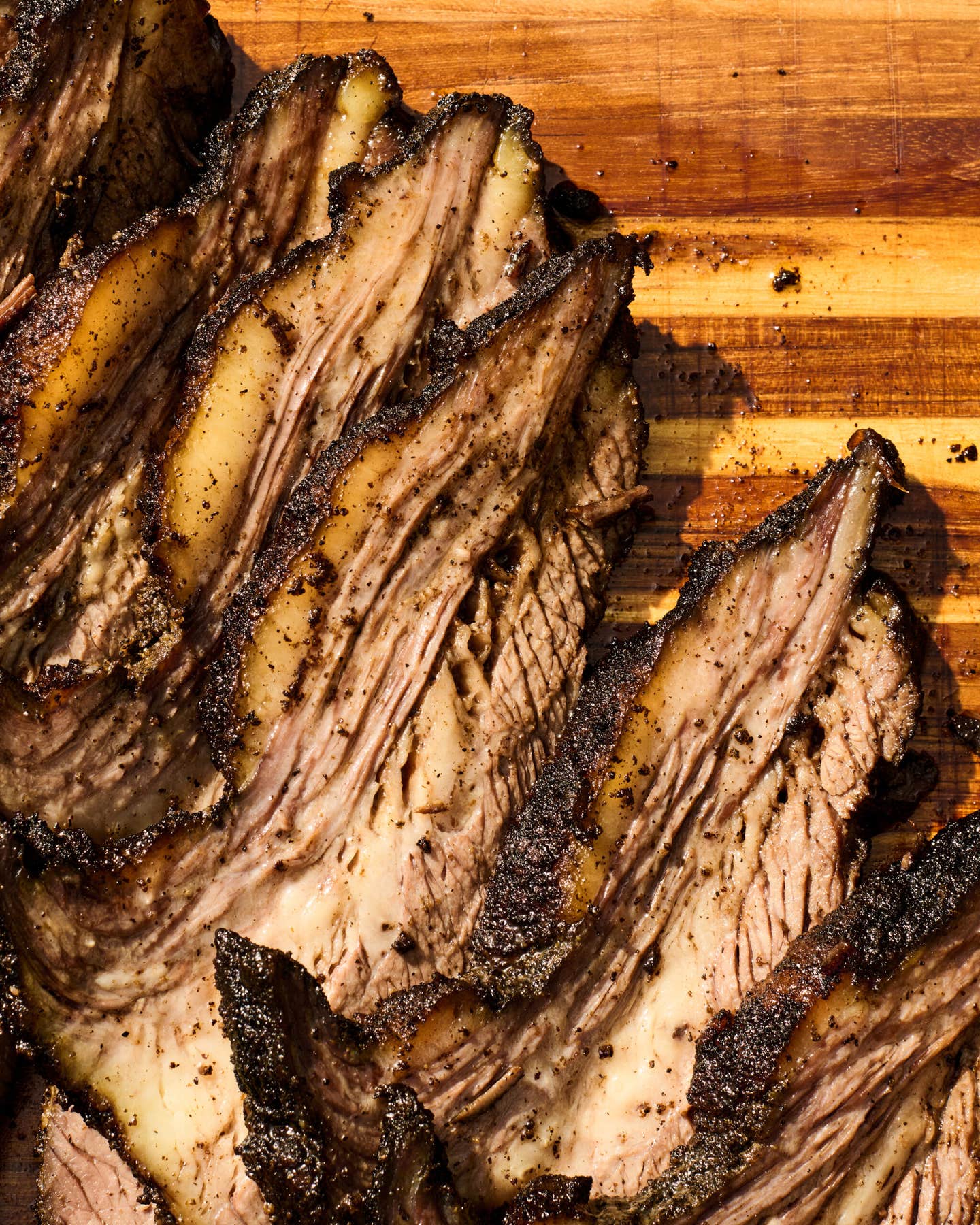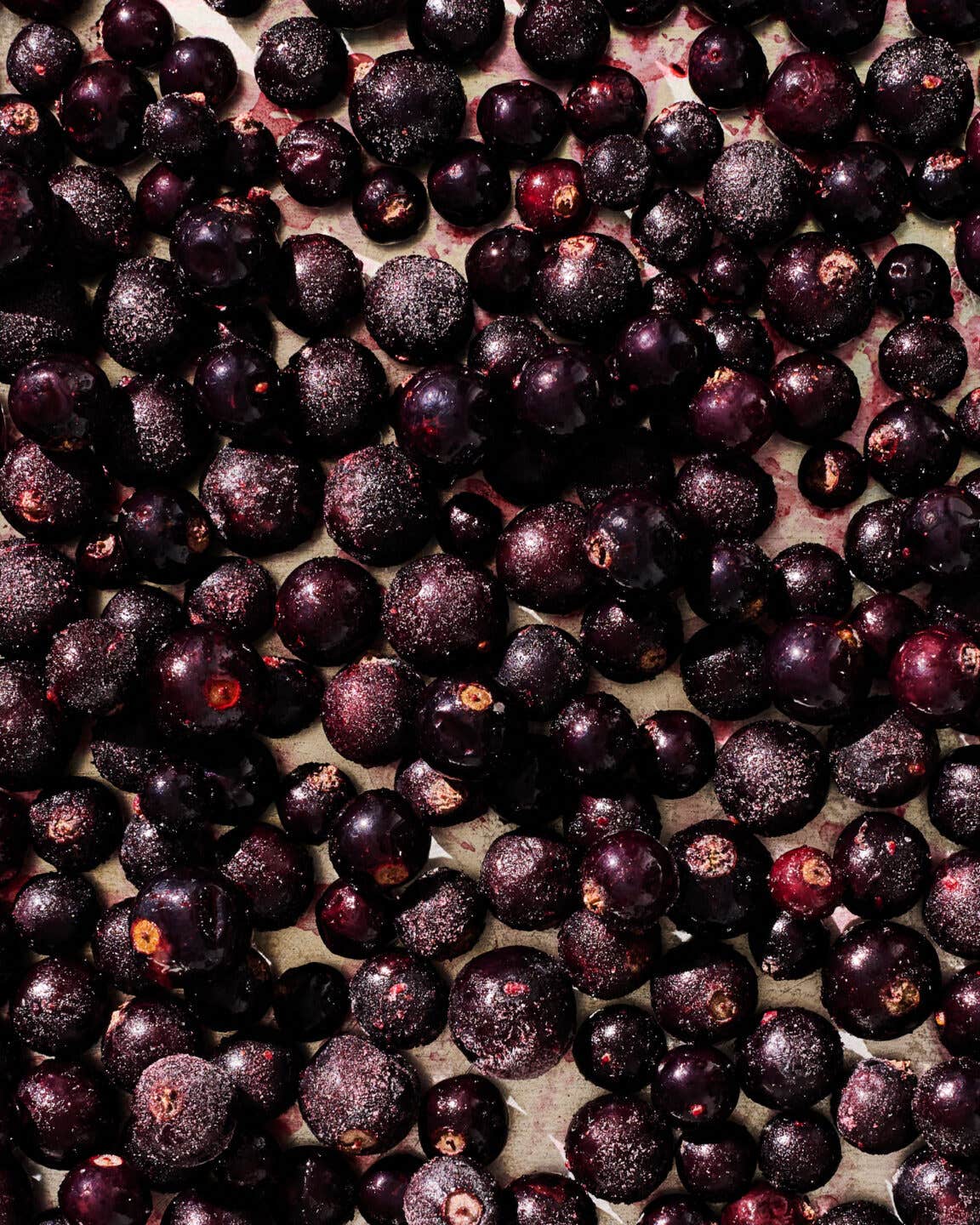
Thanks to the marvels of modern refrigeration and shipping, buying seafood has never been easier. Fillets, half sides, and steaks are readily available from most grocery store fishmongers these days. But the pleasure of nose-to-tail dining, and with it, a better understanding of what’s on our plates is unbeatable—not to mention more sustainable. Maybe you like to catch your own. Or maybe you like to pick up an extra-fresh catch from the docks. Either way, knowing how to clean a whole fish is a useful skill for any home cook.
Last month, while the SAVEUR team was in South Carolina for the Charleston Wine & Food Festival, I met up with James London, chef-owner of Chubby Fish, a dinner-only neighborhood restaurant spotlighting exclusively local seafood. London is an avid fisherman who is committed to serving responsibly caught fish. He’s also a generous teacher, and he invited me into his kitchen to demonstrate how he likes to fabricate the gorgeous whole fish he brings in from his purveyors. The species he was working with that morning was a grunt—a small, round, by-catch species identified by its bright orange mouth. The method he demonstrated will work well for round fresh- or saltwater fish of any size, including cod and salmon. Ready to take matters into your own hands? Here’s London’s step-by-step tutorial on how to clean a fish.
Set Up Over the Sink and Trim the Fins.
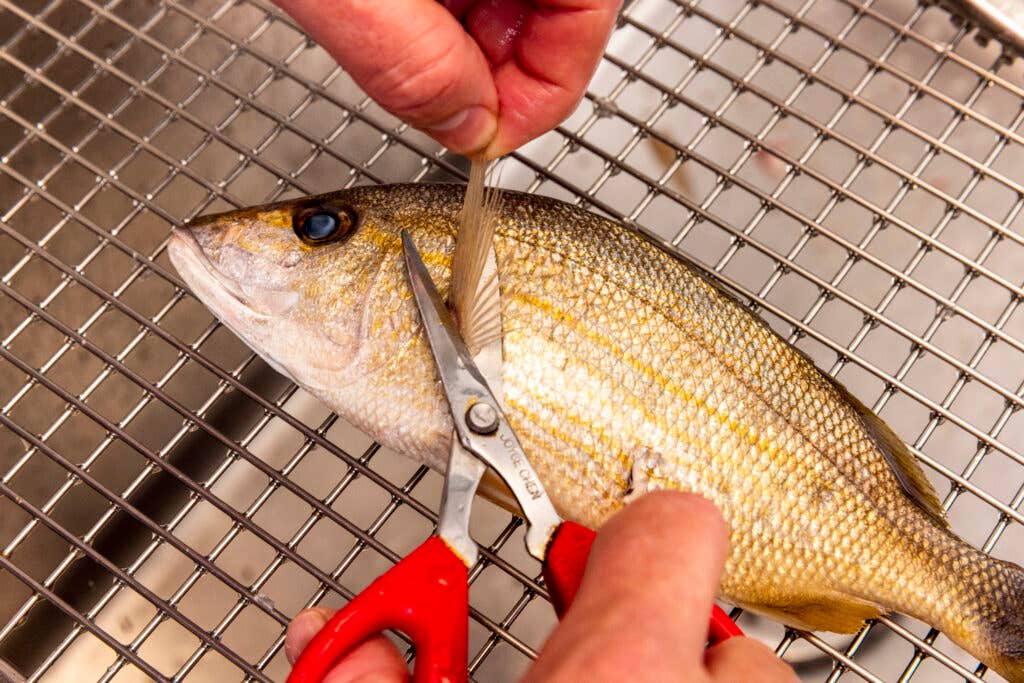
Cut down on clean-up by positioning a large wire rack directly over the sink; this will be your work surface for the first half of the process. (You can also work right in the sink if you don’t have a wire rack.), Place your fish on the rack, then use sharp kitchen shears to clip away all of the fins. Most round fish (think red snapper and branzino) have five fins (flatfish, like flounder and sole, have different anatomy.) The dorsal fins are located on the top of the fish, sometimes in two parts, or otherwise in one long fin. The anal fin is at the bottom, closer to the tail. Two pectoral fins can be found on either side, just behind the head; the pelvic fins are beneath the fish’s chin.
Scale the Fish.
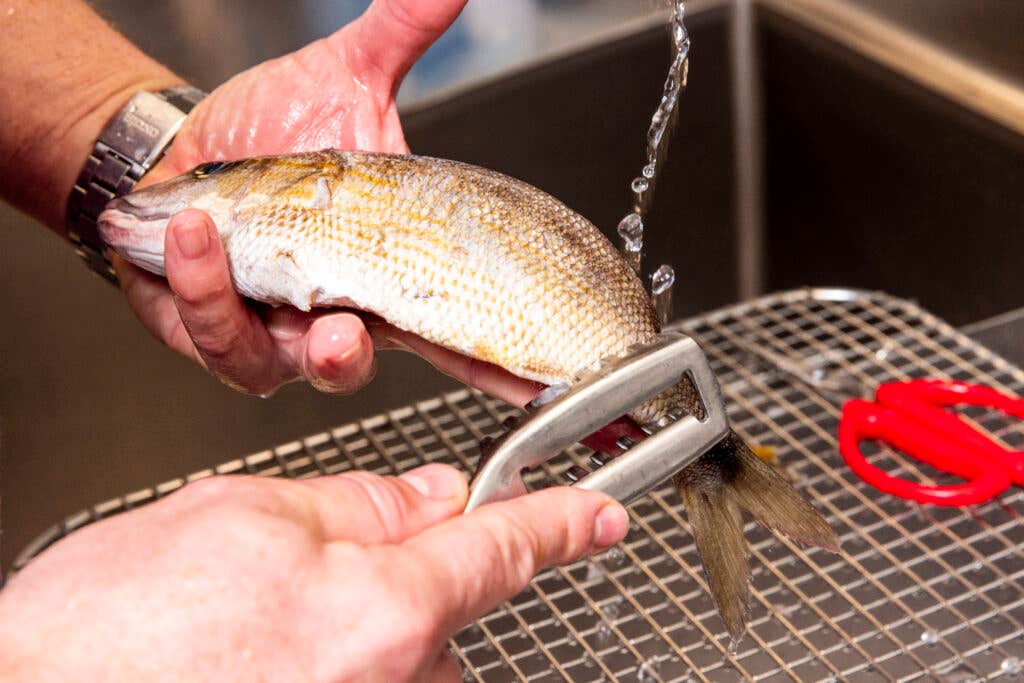
An inexpensive scaler makes quick work of removing the fish’s tough outer layer. To begin, turn on a slow stream of cold running water; scaling under the stream directly into the sink prevents scales from flying everywhere as you work. They’ll get caught in the drain and you can discard them when you're done. Then, hold the scaler in your dominant hand while you hold the fish with your non-dominant hand. Using gentle but firm pressure, run the textured side of the scaler against the side of the fish in long strokes, from tail to head. “The places where the scales are most difficult to remove are by the chin and at the base of the tail on the bottom,” London explains, so make sure to concentrate on those spots. Run your hands in both directions over the fish to feel for any remaining scales, then give it a good rinse.
Remove the Guts.
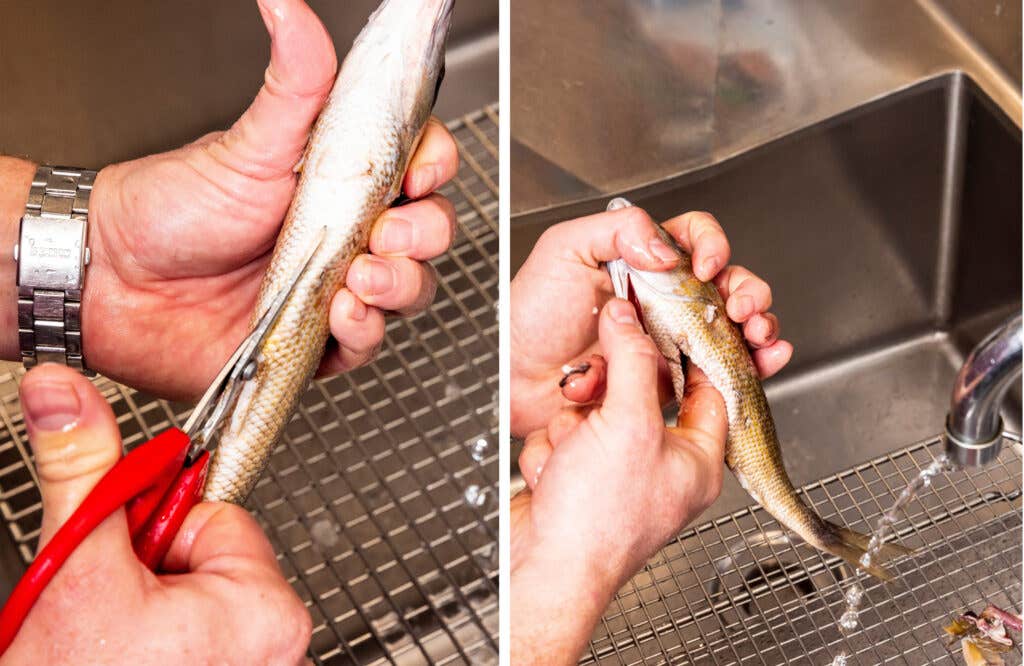
Starting at the bottom of the fish, near the tail, slide your shears into the belly and snip open from the tail to the chin. Tuck your fingers into the opening and pull out and discard the contents. Give the fish a good rinse inside and out to wash away any blood. Next, pry open the gills behind the eyes, and using your finger, pull out the u-shaped cartilage; this will remove any guts that remain in the fish. Rinse once more, and with the water running into the cavity, run your finger along the inside spine, washing away the bloodline.
Set Up Your Fillet Station.
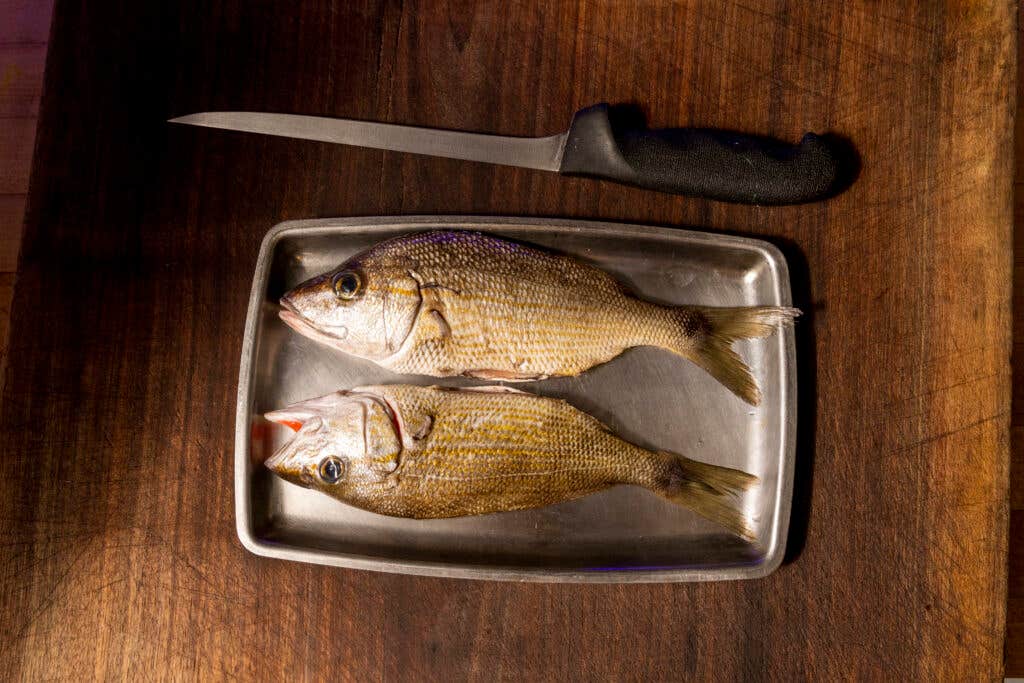
Pat the fish dry with paper towels, then transfer to a cutting board. A clean, dry work surface is mportant, not only for sanitation purposes, but also for safety—excess moisture can lead to slipping and sliding as you cut.
Kitchen shears and a sharp fillet knife are essential for the following steps. London loves the inexpensive Dexter knife, which can be used for breaking down a chicken or even deboning a leg of lamb. This model is easy to find, holds a sharp edge, and has a flexible blade. “All the professionals use it,” he tells me, “and you can just sharpen it on a steel,” making the Dexter a perfect choice for the home cook. London also loves a traditional Japanese-style blade called a deba, which is specifically designed for filleting; its one-sided bevel shaves close to the bones, resulting in an exceptionally clean cut.
Score the Skin.
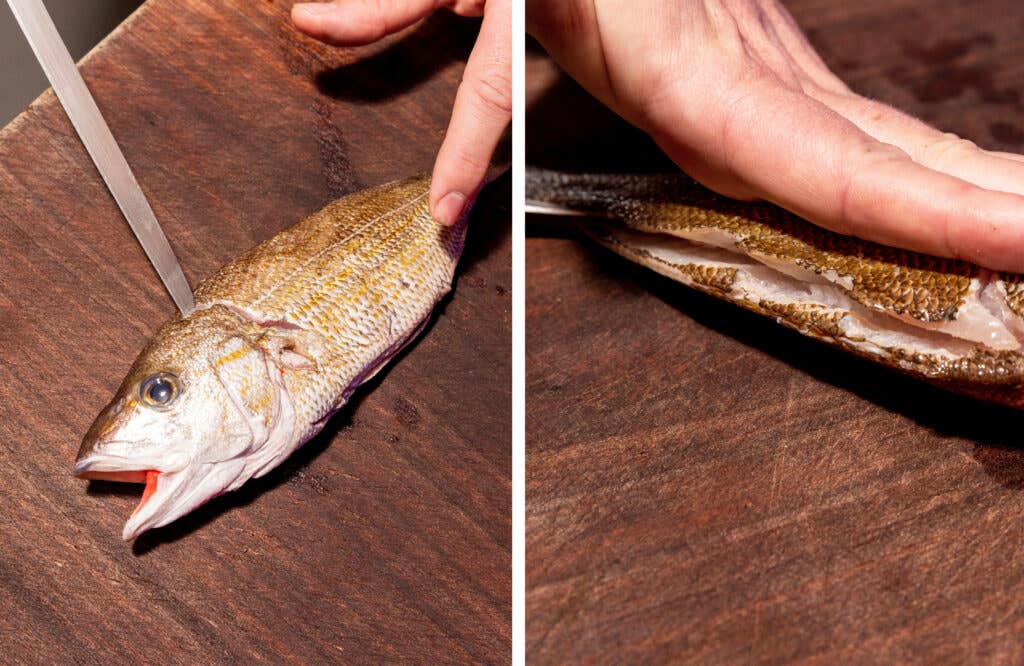
Use the fingertips of your non-dominant hand to find the soft spot on top of the fish’s head, then, insert the tip of the knife gently. Hold the fish firmly in place, then run the tip of the knife down the spine, scoring the skin from the base of the head all the way down to the tail.
Slice Away the Fillet.
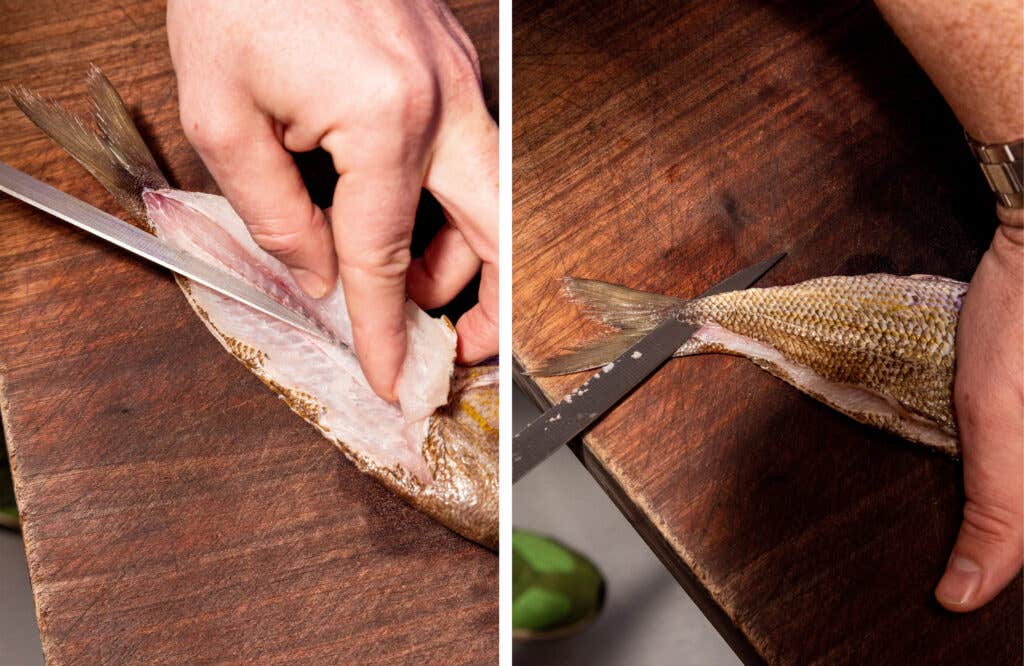
Following the initial cut and using no more than an inch of the blade, make long strokes with your knife to gradually slice away the fillet, while your other hand lifts the fillet as you go. (By lifting the fillet, you expose the bones, so you can see and follow the natural shape of the fish.) Try to keep your knife as close to the bones as possible as you work your way down towards the belly to keep as much of the flesh intact as possible. If you can hear the knife click against the bones as you slice, it means you're on the right track; if not, angle the knife downwards to bring the edge closer to the ribs.
Once you make it down the belly, the fillet should only still be attached at the tail and the head ends. Place the palm of your hand over the fish, holding the fillet in place, then slide the knife between the fillet and the ribs. Carefully glide the middle of the blade through to detach the meat at both the front and back of the fish, then set the fillet aside.
Remove the Second Fillet.
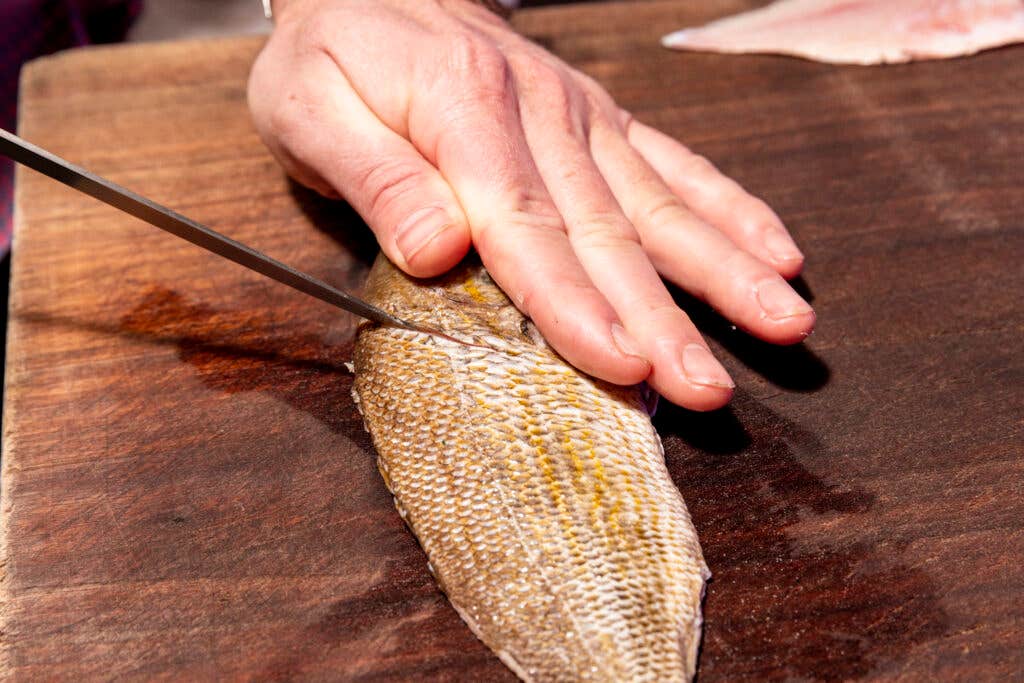
Flip the fish over so the head is now pointed towards your non-dominant hand. Use the tip of the knife to cut behind the fins, then, starting at the belly, cut along the collar bone in a u-shape, towards both the spine and the soft spot of the head. Next, starting from the tail this time, use the tip of your knife to score the skin along the spine once again until you reach the head. Repeat the same long shallow strokes as before to slice the second fillet away from the ribs. “The fish will tell me where to go,” London explains, “it tells me if I'm getting in too far and where I need to steer my knife along the bones.” At this stage, the fillet will only be attached at the tail; while holding the fillet down with your palm, use the middle of the blade to cut away that piece. Now you will have two fillets and the carcass of the fish. Reserve the fillets to cook however you like; the bones can be reserved for fish fumet or stock which can be used in soups or paella, or as a poaching liquid.
Skin the Fish.
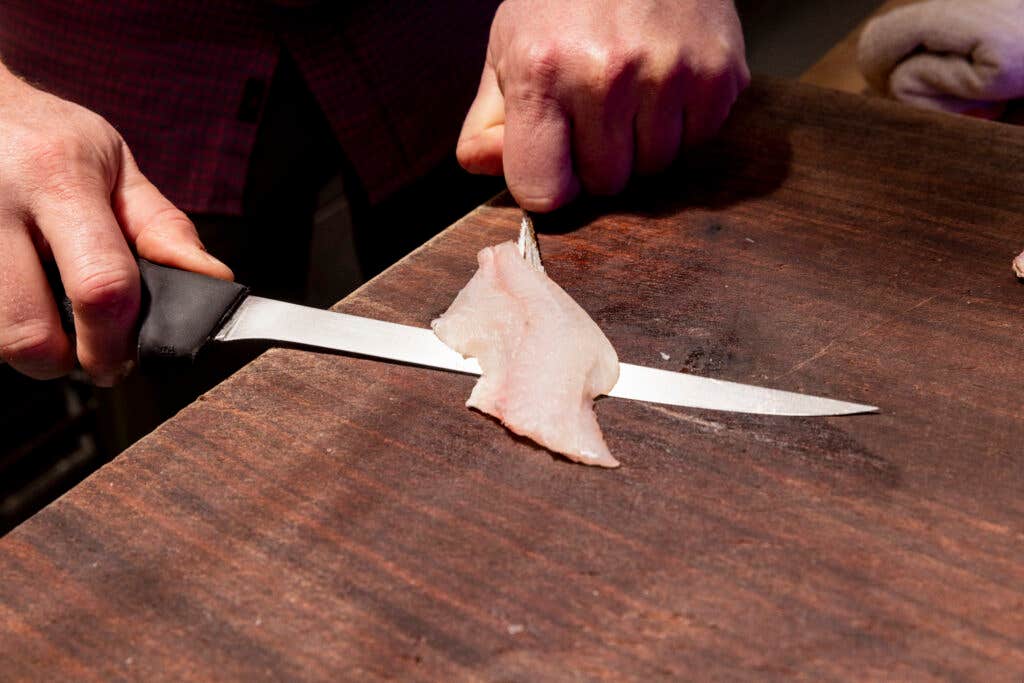
At this stage, you can cook your fillets as-is. However, if you want to remove the skin, keep going. Position one of the fillets skin-side-down, with the tail end pointing toward your non-dominant hand. Grip the knife in your dominant hand and make a shallow cut into the flesh just where it meets the skin. Grab the piece of released skin and, with your knife under the meat and parallel to the cutting board, wiggle the skin and knife as you work your way down the fillet, gently separating it from the skin. You can save the skin along with the bones for stock, or discard.
At this point, you can prepare the fllets right away, or otherwise wrap them in damp paper towels and transfer to the fridge for up to a day.
Keep Reading
Continue to Next Story
